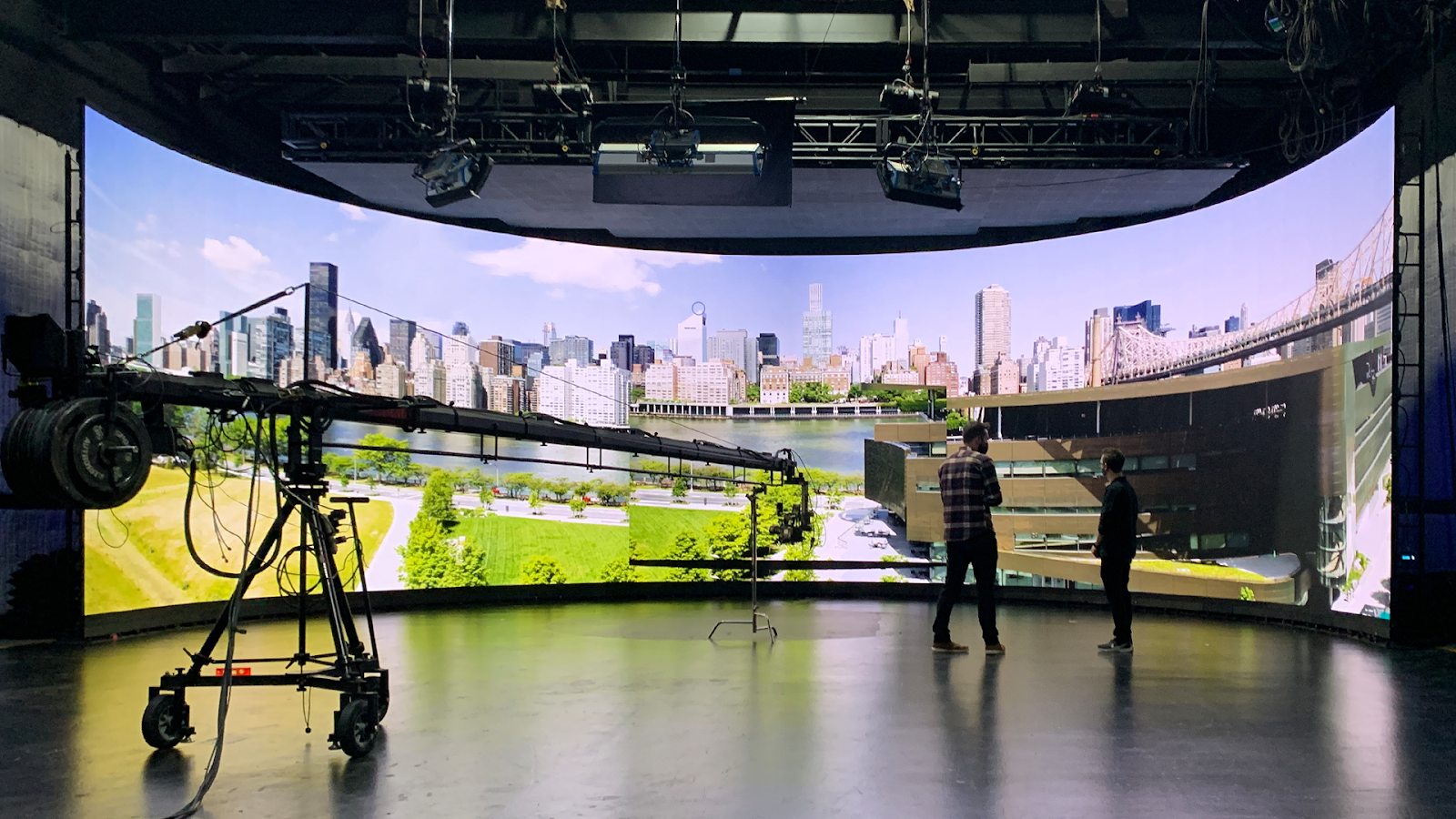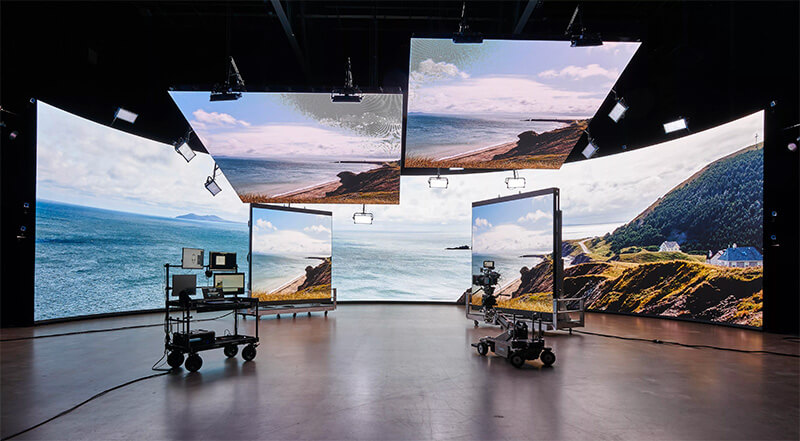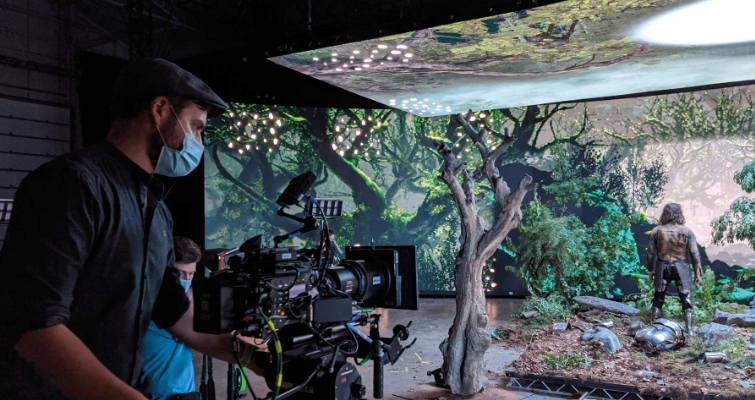A Dive into Virtual Production Technology
Exploring the Cinematic Revolution
Why move your production to Italy, when you can recreate the entire experience in a studio? In today’s economy, it just makes sense to explore the advantages of virtual reality. It’s a technology that helps filmmakers create entirely new worlds in which to tell their stories, while being mindful of budget constraints.
The global Virtual Production market size is expected to grow at an annual rate (CAGR) of 10.38% during 2024-2032. This new technology continues to evolve due to the escalating demand for high-quality content, an increasing number of streaming brands, and the expansion of “over-the-top” (OTT) platforms.
All of these factors continue to drive the market and feed the curiosity for virtual technology. In this blog, we take a short journey through the evolution of Virtual Production (VP) including what it is, how it’s used, and future trends that will put your production ahead of the curve.
Virtual Production in a Nutshell
To succinctly describe this technology, Virtual Production refers to a filmmaking technique that combines traditional filmmaking with the use of computer-generated elements in real-time.
This strategy involves the integration of physical set elements and actors with virtual environments and effects. These experiences are often facilitated by advanced technologies like motion capture and real-time rendering engines.
Key components of Virtual Production include:
- Virtual Sets: Digital environments and backgrounds that are created and manipulated in real-time. This allows filmmakers to shoot scenes in fantastical or challenging locations without having to leave the studio.
- Real-time Rendering Engines: Advanced computer graphics systems that generate high-quality visuals in real-time. This enables filmmakers to view virtual elements on set as they shoot and live composite.
- Motion Capture: Recording the movement of actors or objects to animate digital characters or enhance the movements of virtual elements.
- Virtual Tracking Cameras: Cameras are equipped with tracking tech that deliver camera position and orientation to the host computer in real-time. This move metadata drives all CG assets, then allowing for the completely rock-solid integration of the virtual and practical worlds.
- LED Walls: Large LED screens are sometimes used as both photographic backplates and lighting sources. This technology is best used when your shoot has a need for interactive lighting and reflections. You’ve seen them used in shows like “The Mandalorian”.
- Green Screen: A proven cost effective technology while enabling the same live action compositing as LED Walls at a much lower price point and enables easy post-production CG modifications, if needed. You’ve seen it used in movies like “Thor: Love and Thunder”.
Where Did Virtual Production Come From?
Australian film director, Clayton Jacobson, first had the idea of building upon existing green screen technology while filming a TV commercial for detergent in 2003. Watching his son play 3D video games inspired him to develop tools for Virtual Production.
Eventually, in 2016, Jacobson and his son made one of the first prototypes for a Virtual Production stage in their shed using a set of LED screens.
Also in 2016, Dir/DP Alex Fernbach and Kara Vedder President of Cobalt Stages were the first to bring the Lightcraft VP technology to their soundstage in Hoboken, NJ.
Virtual Production in Action
The technology didn’t really catch on until 2018. It was then that an Australian cinematographer, Greig Fraser, used the technology to film the Star Wars franchise spin-off series, “The Mandalorian”.
The Star Wars team installed huge LED walls linked to powerful computers that ran Unreal Engine gaming software (used for video games like Fortnite) combining production with post-production.
They called this soundstage “The Volume”.
Technically Speaking
Virtual Production merges the practical world with computer generated environments. Behind this technology are machines that render real-time composites on-set. This type of process enables filmmakers to see virtual elements integrated with live-action. Established brands like Mo-Sys offer Virtual Production solutions, VP training, camera tracking, robotics, motion capture, and remote production technology. Cobalt Stages uses the integrated Mo-Sys system for both LED and green screen VP methodologies by combining:
- Mo-sys Star Tracker
- Black Magic 4K recorders
- Ultimatte 12 Keyer
- And 2 ThreadRipper PCs hosting both UE 4.7 and 5.3

The Step-by-Step Process of Virtual Production
- Pre-visualization: Scenes are planned and visualized digitally prior to shooting. This enables filmmakers to make creative decisions regarding framing, lighting, and camera movement. This also reduces the fumbling often experienced during a typical production.
- Real-Time Production: Using green screens and/or LED walls, actors can be placed within these pre-designed environments in real-time.
- Capture in Camera: The live composited scenes are then captured in-camera reducing the need for extensive, post-production work.

Who’s Using Virtual Production?
The more appropriate question these days is, “Who isn’t?” Virtual Production is normal.
Here are a few examples of productions where VP has been a huge success:
Television
- The Mandalorian
- House of the Dragon
- Percy Jackson and the Olympians
- Masters of the Air
- Silo
Feature Films
- Barbie
- The Jungle Book
- The Irishman
- Bullet Train
- Ant-Man and the Wasp
The Top Benefits of Virtual Production
Virtual Production combines your physical world with intuitive graphics and imaginative design. However, it’s also incredibly cost-effective and efficient, saving production companies valuable time and money. It even cuts back on waste.
In large productions, hundreds of thousands can be spent on set fabrication, and demolished sets produce significant waste. When using Virtual Production, sets are confined to a 3D virtual space, keeping unnecessary waste away from Mother Earth.
Click here for an explainer video on Virtual Production.

Today, Virtual Production is a critical tool to cut costs, inspire ingenuity, and streamline the very nature of traditional filmmaking. VP brings about enhanced creative control while reducing logistical constraints.
Are you ready to get started shooting with Virtual?
Want to learn about virtual production and how to use it?
Cobalt’s got you covered. As the first company to offer Virtual Sets on the East Coast, we have the experience to guide you. Let’s have some fun.

